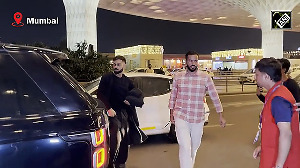The experts at TCYonline.com (https://www.tcyonline.com/), who have been designing strategies for other similar computer-based tests like the GMAT and GRE for over 10 years, present
a few overall reading strategies that should prove helpful:Imagine an RC passage on a computer screen. On the left half of the screen is the passage and on the right are the questions which appear one at a time.

As you can see from the screen shot, to your left is the passage and to the right is Question No 1 out of a total 20 questions. The "NEXT" button helps in moving ahead to the subsequent questions if a question is done or is to be left un-attempted.
As you would observe, an RC passage on the computer poses some real challenges. Some of them are:
- There's no way to underline the keywords in the questions as well as in the passage.
- One has to scroll down the passage using a 'scroller' as the complete passage is not visible at a time.
- You can read only one question (and NOT all the questions in one go as is possible with the paper-based CAT) at a time.
- It is expected that a lot of time will be wasted when a student has to re-read the passage every time a new question appears.
- Moreover, it is easier to spot the right place to get an answer to a particular question on paper rather than on a computer screen.
- Result : Time taken per question is bound to rise and the accuracy is adversely affected if the test is attempted in rush.
- Overall idea and tone of the passage
- Pointers to spot the right place where the answer is located.
Constructing a "Dot Diagram" of the passage
Remember the dot diagram that you came across in the kids section of a paper or magazine? There could be hundreds of dots. When once you join a few dots to form a picture, the other dots become irrelevant. Your RC is like that dot diagram. The hundreds of words are like the hundreds of dots. The questions revolve around the picture and not the words.
Now how do you join the dots? Our advice:
Pre-read: Get a feel of the passage by reading the opening lines of each para (the opening para in particular) as well as the concluding lines of the last para.
Speed read: You have to drive a train, say from Delhi to Mumbai. Should you drive at the same speed throughout? What about the stations that fall along the way? You will definitely slow down and even stop at some of the stations. Do the same thing in the case of RC.
Jot down important points as you proceed: Speed read the first para. Write down its gist in a single phrase on your scratch sheet. Do the same thing in case of the other paragraphs. Now you have five ideas for (say) five paragraphs. The common link among these five ideas is your dot diagram.
Post read: This is to make sure that the picture you made was right. Look for repetitive words and phrases in the passage. These have to be part of the picture.
The opening paragraph and the concluding para are important. But remember if the test taker is smart the test giver is smarter. Sometimes there may be nothing much in these paragraphs. So don't overdo it.
Linking up the answers: You will be able to view only one question at a time. But the answer to various questions based on a passage should have some link. And the link is provided by -- what else but -- the picture that you formed.
Top Careers & You (www.tcyonline.com) has been preparing national and international candidates for high-end tests viz. CAT, XAT, JMET, SNAP, CET, FMS, IIFT and GMAT since 1998. Visit www.tcyonline.com to gain FREE access to thousands of these tests.





